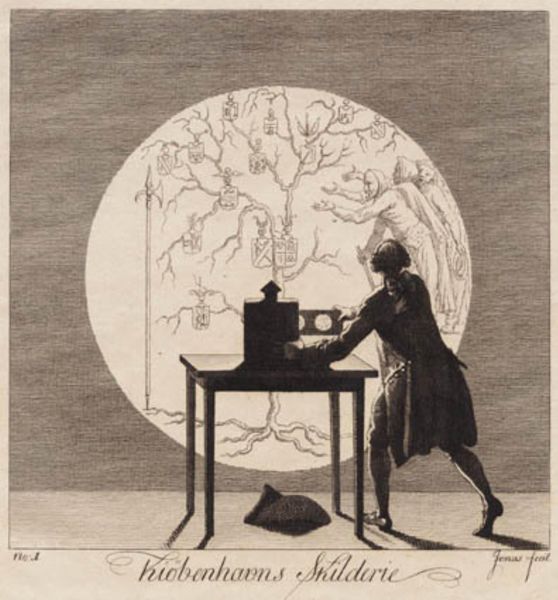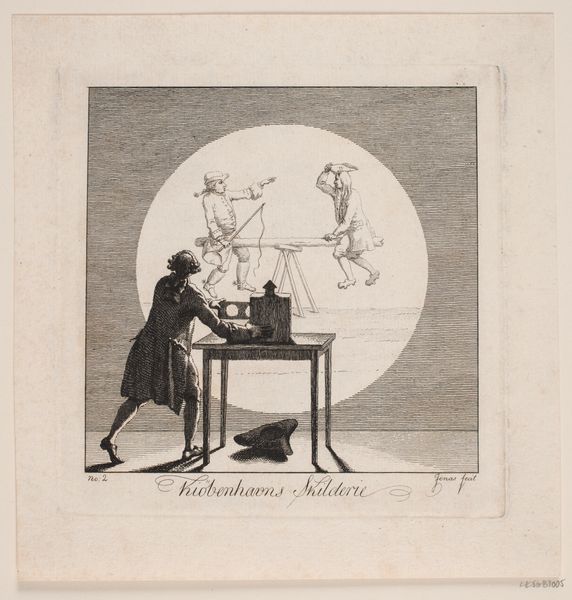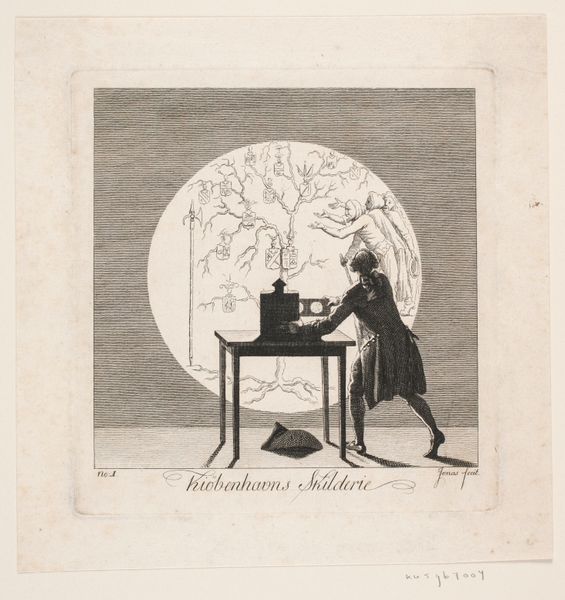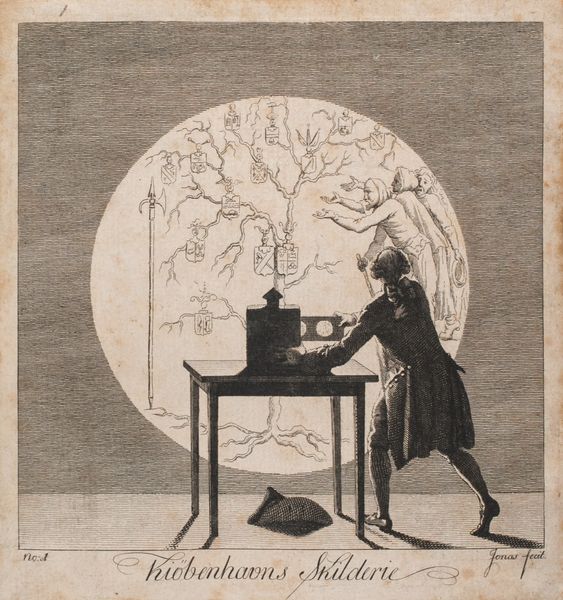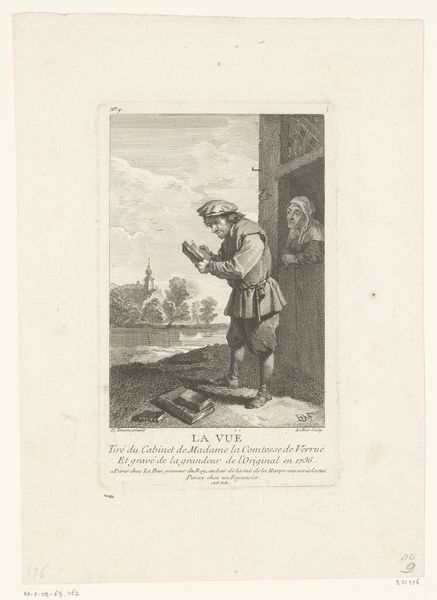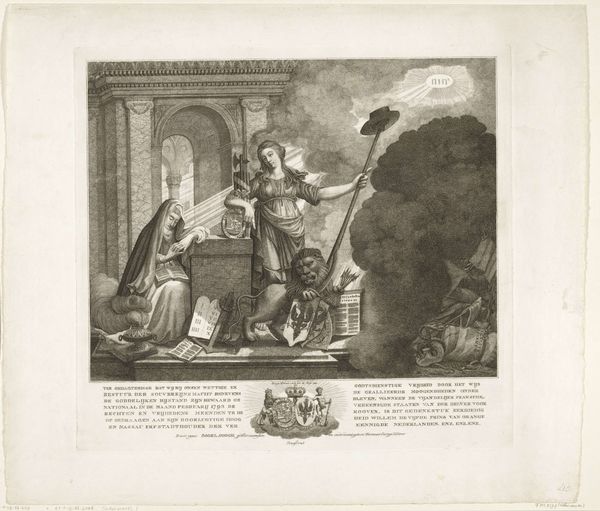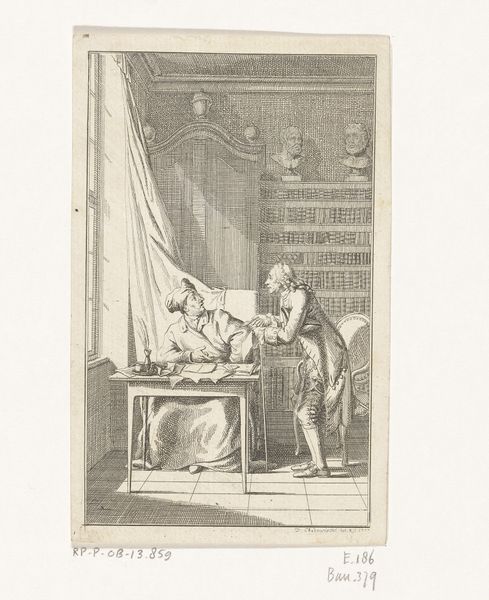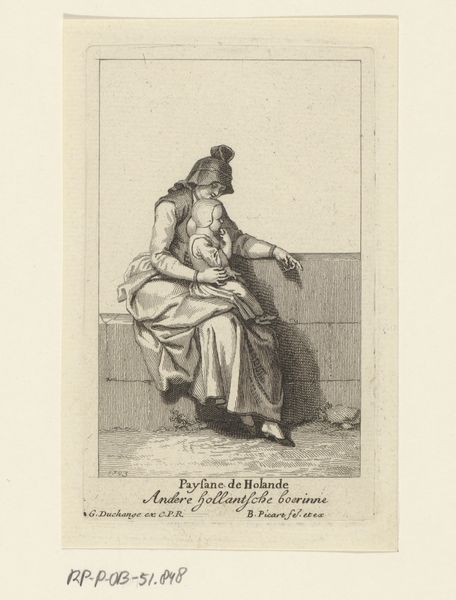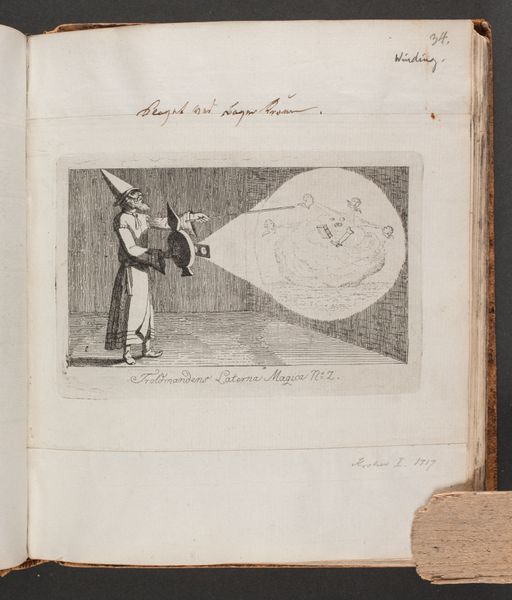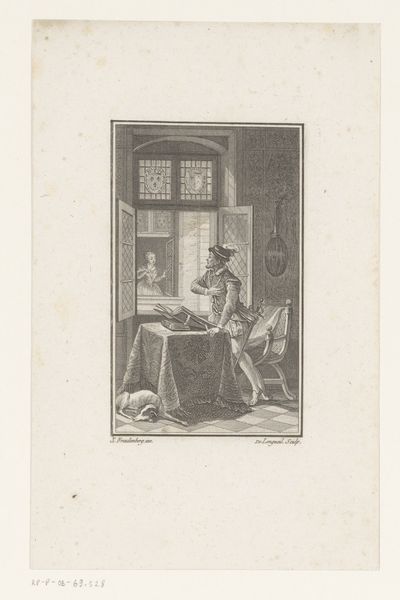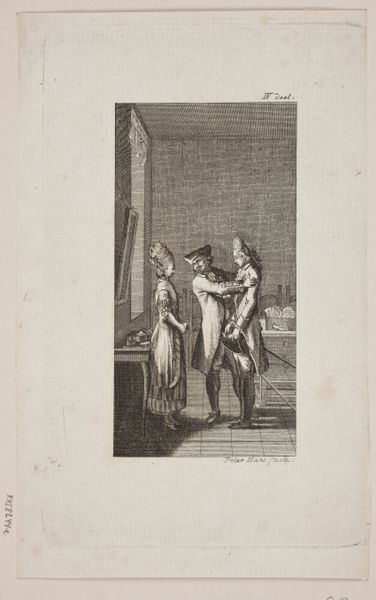
print, etching
#
portrait
#
neoclacissism
# print
#
etching
#
figuration
#
line
#
history-painting
Dimensions: 264 mm (height) x 207 mm (width) (bladmaal), 157 mm (height) x 154 mm (width) (plademaal), 136 mm (height) x 137 mm (width) (billedmaal)
Curator: Welcome to this look at "Kiøbenhavns Skilderie", No. 4, an etching rendered between 1785 and 1788 by J.F. Clemens. This print provides a glimpse into history-painting and figuration through a neoclassical lens, showcasing precise lines typical of the period. What is your immediate reaction to it? Editor: My goodness, what a quirky piece! It feels like a philosophical joke, like someone’s inner turmoil manifesting as winged figures behind a rather dapper gentleman. Is he even sitting on a barrel? And why the fallen hat? Curator: Your observations are perceptive. Considering the socio-political climate of the time, the etching engages with notions of artistic representation and social commentary. Clemens employs neoclassical style, a deliberate engagement with reason, while seemingly layering it with commentary on society. The figure's action hints at commentary embedded in the round 'window.' The hat can act as commentary for people, places, things that hold power, but in his composition, is disregarded by its subject. Editor: I love that idea! It feels like he is a creator observing us all. But back to those ethereal figures— they really contrast with his formal attire. Is he drawing the scene, or is the scene being drawn on his conscience, perhaps? The work plays with line, yet remains in opposition with its dreamlike subject. It almost speaks to different versions of life we live within our individual consciousness, so removed and untouched, while the weight and burden of time remain untouched by time itself, like stone. Curator: Exactly. The etching makes a statement about the roles and the power we perceive for figures throughout societal structures of power. In particular, it evokes history paintings while questioning who and how narratives are constructed. Clemens offers a complex perspective. Editor: Well, he certainly succeeded in piquing my interest, and I might say this calls on one to inspect who might actually be telling history's stories—and the ethics we impose on storytellers! Curator: A powerful reflection, indeed, especially concerning how we engage with art and its narratives. It invites a more profound consideration of intersectionality of artistic integrity, cultural impact, and personal conscience. Editor: Beautifully stated! I shall certainly not think of hats the same way!
Comments
No comments
Be the first to comment and join the conversation on the ultimate creative platform.
